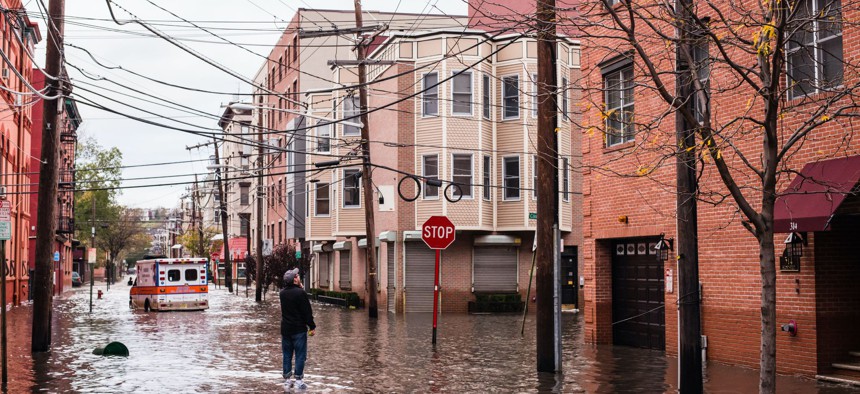Report: Flooding has Devastating Effects on Affordable Housing

Hoboken, New Jersey, Man standing on the flooded street is talking to someone left in the building, ambulance car in the background.
People of color, seniors and the disabled are most at risk of flooding's financial and health risks, according to academic research on coastal areas in the U.S.
Flooding and rising sea levels are leaving residents in coastal towns and cities most vulnerable to the effects of climate change, according to research published by academic scientists in Environmental Research Letters.
The study indicates people who are on the lower socioeconomic scale and live in affordable housing are more likely to experience the devastation caused by flooding, which can disrupt utilities, damage belongings, contaminate water and generate mold.
According to the report, the general population of people living in these affordable housing units tends to be seniors, people of color and the disabled. In addition, people of color (81.2%) reside in affordable housing located in cities that are most vulnerable to flooding.
The 20 cities with the most at-risk affordable housing units are exposed to flooding at least four times a year, the report says. Revere, Massachusetts, and Crisfield, Maryland, are highlighted because they have relatively little affordable housing, but have 90% of the units exposed to climate-related hazards and flooding.
Furthermore, the 20 cities most affected by flooding and other effects of climate change are in some of the poorest regions, with an average median annual household income of $28,618 -- about half the national median income.
The study suggests this is the first nationwide assessment of present and future risks of coastal flooding to affordable housing in America. The project used sea-level rise, annual flood probabilities and data on general and affordable housing stock in coastal cities to assess risks.
Researchers indicate that by 2050, several states will have affordable housing units at risk of coastal flooding at least four times per year. New Jersey is most exposed to this danger, with nearly half of its housing units in probable flooding areas.
Hurricane Sandy especially caused major flooding and damage to affordable housing apartments in the New York City area. Hurricane Sandy caused an estimated $70.2 billion in damage, hitting low-income residents particularly hard. About 43% of the 500,000-plus households in New York and New Jersey that asked for federal aid after the 2012 storm reported annual incomes of under $30,000.
The northeastern corridor and California account for roughly 70% of the United States’ aggregated expected flood exposure, according to the research.
According to the Urban Institute summary, the study suggests resilience measures, coordinated flood protection, sustainability strategies and public-private partnership programs be implemented to help reduce flood exposure risk. Also, the increased building of resilient affordable housing will further put residents at risk in the future.
To review more detailed information on the research click here.
Brent Woodie is an associate editor at Route Fifty.
NEXT STORY: Integrating open data, open source, cloud drives efficiency





